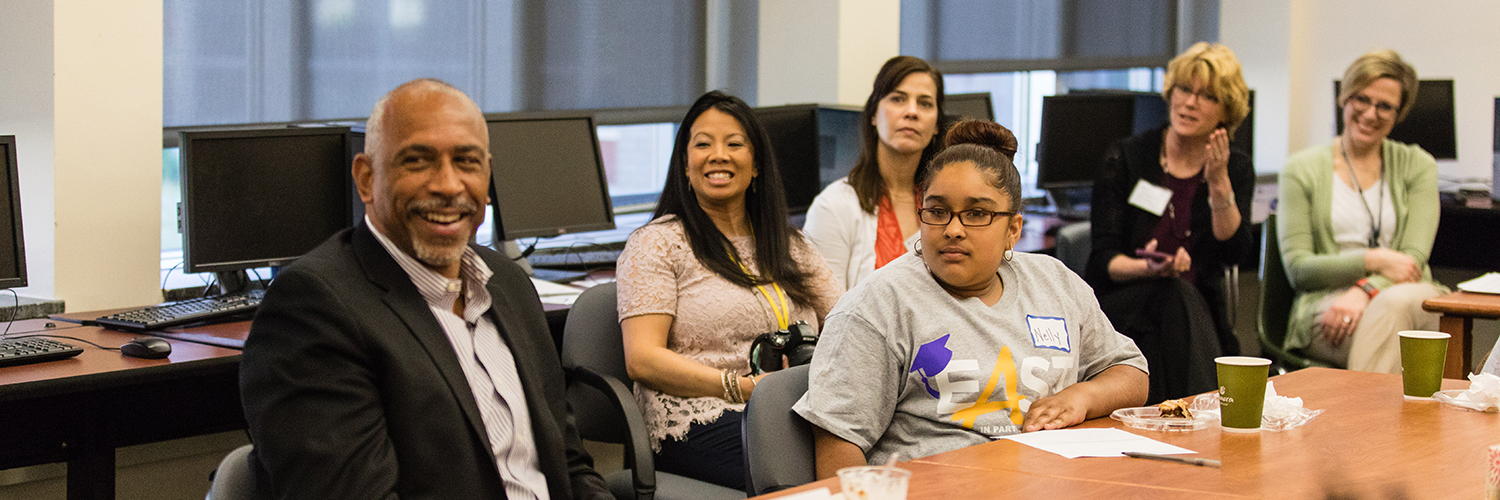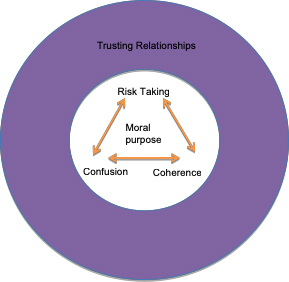
Distributed Leadership
Leading comprehensive school reform is a challenge on a good day. We know from research that educational leadership needs to be grounded in activity rather than focused on individuals. At the CUES and the East-EPO, we rely on a research-supported understanding of leadership as applied broadly across a school’s faculty and staff, rather than focusing narrowly on the actions of a singular person or subset of people who hold designated, administrative roles.
In our model, leadership in the context of justice work means that justice is the moral purpose. Equity and access are in everything we do, especially for students. Everyone – leadership, teachers, and staff – is accountable for this moral fabric. Our challenge has been to ensure that we don’t let a focus on the individual take over. This work is not about one person’s needs, it’s about the good of the whole community.

Publications
Marsh V., Nelms S., Peyre S., & Larson J. (2022). How a university and a school district made change together. Phi Delta Kappan, v104 n1 37-43
Nelms, S. (2022, June 17). Expert viewpoint: 6 tips for education leaders working toward equitable schools. THE Journal.
Larson, J. & Nelms, S. (2021). Collaborating for equity in urban education: Comprehensive reform in an innovative university/school partnership. Urban Education, 1-32. DOI: 10.1177/004208592110170976
Additional Resources
Bryk, A. & Schneider, B. (2002). Trust in schools: A core resource for improvement. New York: Sage.
Leithwood, K., & Mascall, B. (2008). Collective leadership effects on student achievement. Educational Administration Quarterly, 44(4), 529-561, DOI: 10.1177/0013161X08321221
McKenzie, K. & Locke, L. (2014). Distributed leadership: A good theory but what if leaders won’t, don’t know how, or can’t lead? Journal of School Leadership, 24, 164-188.
